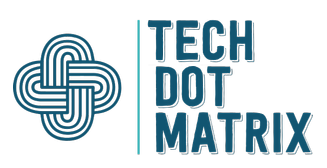
Here are some of the top mobile app development trends that were expected to shape the industry. Please note that trends may have evolved since then, so I recommend checking more recent sources for the latest updates:
- 5G Technology: With the widespread adoption of 5G networks, mobile apps were expected to become faster and more efficient, enabling better user experiences, increased data transfer rates, and reduced latency.
- Artificial Intelligence (AI) and Machine Learning (ML): Integrating AI and ML into mobile apps allowed for personalized user experiences, smarter recommendations, and improved automation, enhancing app functionality and efficiency.
- Augmented Reality (AR) and Virtual Reality (VR): AR and VR technologies were expected to gain traction in mobile app development, offering immersive experiences in gaming, shopping, education, and other fields.
- Internet of Things (IoT) Integration: Mobile apps were anticipated to interact with IoT devices, creating a connected ecosystem that enables users to control and monitor smart devices through their smartphones.
- Blockchain Technology: Blockchain was expected to revolutionize mobile app development by providing secure and transparent transactional capabilities, particularly in industries like finance and supply chain management.
- Instant Apps: Instant apps allow users to access certain app features without downloading the entire application, reducing the barrier to entry and enhancing user engagement.
- Chatbots and Voice Assistants: Integrating chatbots and voice assistants in mobile apps were set to improve customer support, user engagement, and overall user experience.
- Progressive Web Apps (PWAs): PWAs combine the best features of web and mobile apps, providing fast loading times, offline capabilities, and an app-like experience directly from a web browser.
- Mobile Wallets and Payment Gateways: With the increasing popularity of cashless transactions, mobile apps were expected to integrate secure and convenient mobile payment solutions.
- Enhanced App Security: With the growing concerns about data breaches and privacy, mobile app developers were focusing on implementing robust security measures to protect user data.
- On-Demand Apps: The on-demand economy was projected to continue expanding, leading to the development of apps for services such as food delivery, transportation, and home services.
- Cloud Integration: Cloud-based mobile apps offered scalability, reduced device storage requirements, and easier data synchronization across devices.
- Biometric Authentication: Biometric features such as fingerprint recognition, facial recognition, and iris scanning were becoming more prevalent as a secure and convenient means of authentication.
- Gesture-Based UI/UX: Gesture-based interactions were expected to become more popular as they offer intuitive and engaging user experiences.
- Mobile App Analytics and User Behavior Tracking: Advanced analytics tools helped app developers gain valuable insights into user behavior and app performance, enabling them to make data-driven improvements.
Remember that the mobile app development landscape is constantly evolving, and new trends may have emerged since my last update. I recommend checking more recent sources to get the latest insights on mobile app development trends.
You might also like our TUTEZONE section which contains exclusive tutorials on how you can make your life simpler using technology.




